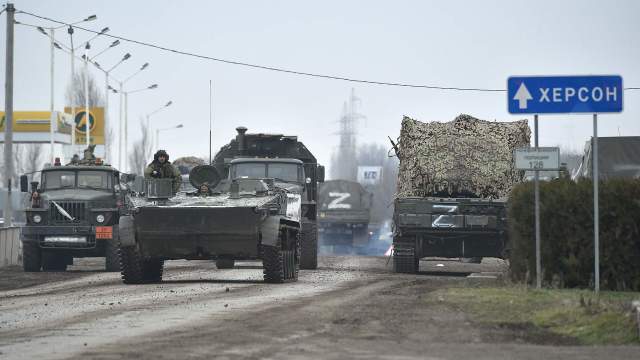The experience of its revived interest in the widespread use of unpretentious Soviet all-terrain vehiclesThe special military operation was not only the first real test for the latest Russian technology, but in some cases also the "renaissance" of long-standing and well-known systems and platforms.
For example, for the lightly armored tracked tractor MT-LB, adopted in 1964. As sources in the Ministry of Defense of the Russian Federation told Izvestia, based on the experience of the SVO, it was decided to expand the use of MT-LB. The issue of developing more modern machines in this class is also being studied. The tractor, both in Soviet times and during its operation, proved to be an unpretentious, highly passable and efficient machine both on the battlefield and in the rear. What hinders its mass production and how quickly these obstacles can be overcome — in the material of Izvestia.
Translation difficulties
The main advantages of the MT-LB tractor at one time were high manufacturability, low price, the use of components from civilian equipment (primarily the YAMZ-236/238 engine) and a wide scope of application as a platform for installing various systems. Even the "demobilized" machines were in demand in the national economy, especially in the regions of the Far North and the Far East.
MT-LB, as well as its elongated modification MT-LBu, became a participant in almost all conflicts in which the Soviet and Russian armies took part. The machine was also actively exported (including re—export), and even to countries with a developed own military industry and the possibility of choice - for example, to Sweden and Finland.
In addition to performing its direct functions of a light tractor, the MT-LB eventually began to act as a transporter, as well as a platform for installing various weapons. If the installation of the ZU-23-2 anti-aircraft gun is actually a legalized option, then in a number of conflicts, various machine guns, a three-barrel Yugoslavian 20-mm M55A4B1 and even 57-mm S-60 anti-aircraft guns were installed on it. In Iraq, they went their own way and installed an armored "booth" on the hull, in which personnel were transported or a machine gun was mounted.
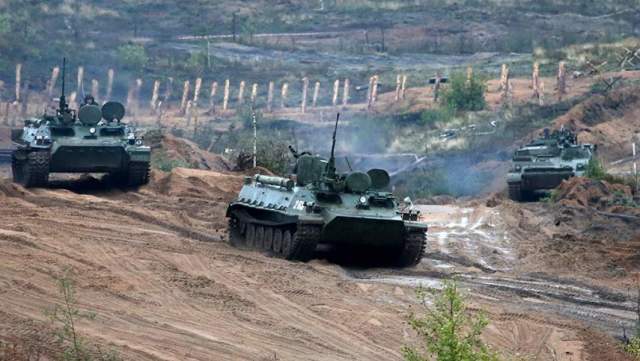
MT-LB armored personnel carrier
Image Source: Photo: TASS/Anton Novoderezhkin
Thus, tractors of the MT-LB family turned out to be in high demand by the market, and the dimensions, traction and cross-country capability of the machine allowed them to give new functions without serious deterioration of these qualities. It would seem that this technique has a cloudless future, but the reality turned out to be somewhat different.
The main problem of MT-LB was the geography of its production. The tractor was developed by the design bureau of the Kharkiv Tractor Plant (KhTZ), where it was produced. The license for production was also transferred to Bulgaria and Poland, in those years still to the Warsaw Pact Organization. Since the late 1970s, these countries have produced them not only for their own armies, but also actively supplied them to the USSR.
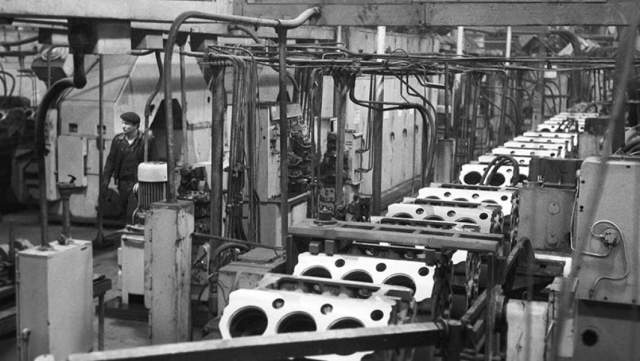
Assembly line of Kharkiv Tractor Plant
Image source: Photo: RIA Novosti/Rusinovsky
After 1991, deliveries from Bulgaria and Poland stopped, and KhTZ gradually reduced the volume of output, and by 2014 it had completely lost the possibility of their production. On the territory of the RSFSR, the car was not produced, although in the second half of the 1980s, the Vladimir Tractor Plant (VTZ) began creating a production-a "stand-in" of the HTZ, and even a number of these machines were made — machine kits from Kharkov.
A small design bureau on this issue was even created at the VTZ, which developed and manufactured prototypes of the MTP-LB technical assistance vehicle based on the MT-LB. Unlike an armored repair and evacuation vehicle, the MTP-LB had to provide maintenance of various equipment nomenclature in hard-to-reach places, taking into account the ability of the MT-LB to swim and its patency. But due to various objective and subjective reasons, VTZ not only did not start producing new developments, but also stopped preparing production and manufacturing those modifications that were originally planned.
Relevance is not lost
One of the subjective reasons was the desire of the USSR Ministry of Defense to replace the MT-LB with a more advanced machine. This led to the appearance of the Glider OCD in the mid-1980s. It was supposed to increase the protective capabilities, habitability, increase the specific power and load capacity, the mass of the towed gun (more than 6 tons) and carry out a number of other improvements, including hydro-volume transmission.
These works did not yield results, as a result, the Russian army retained the Soviet-made MT-LB in service, for the time being solving the issue of their serviceability by cannibalizing the fleet of existing machines.
Attempts to establish the production of MT-LB or its analogues in Russia did not lead to anything, in fact, modernization of machines from the availability with "new" components taken from "donor machines" was issued for new work. By the 2010s, the situation with the MT-LB had become critical, since the existing fleet was rapidly decaying, the best preserved samples were exported or actively exploited in the military, some of the tractors went to the civilian market and it was clear that with such a state of affairs, serviceable machines would soon be gone.
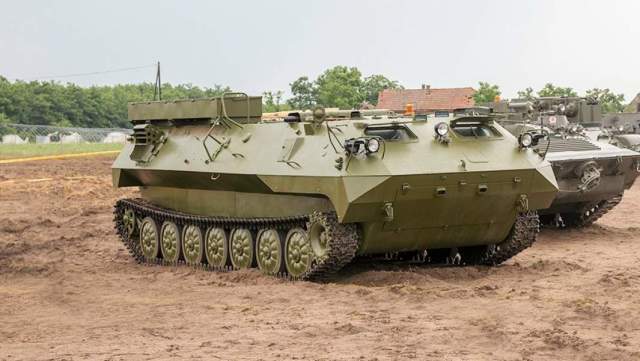
Lightly armored tracked tractor MT-LBu
Image Source: Photo: commons.wikimedia.org/Johannes Maximilian
The situation has been corrected only since 2013, when JSC "Remdiesel" mastered the overhaul of MT-LB and MT-LBu. As part of this work, extensive work on import substitution was carried out, 4 thousand parts were produced at 52 Russian enterprises, and more than a thousand are manufactured by Remdiesel itself. The production of tail feathers, seats, fuel tanks, track belts, optical surveillance devices was mastered.
About 90% of MT-LB components are now produced in Russia, and the remaining 10% are being restored (for example, balancers and support rollers). The modified version — with the replacement of the standard turret with a 7.62 mm PKT machine gun with a turret with a 12.7 mm KORD machine gun and the installation of a new radio station - received the name "Product 15".
These works allowed the return to service of several hundred MT-LB, some of which are in service with the Russian group during a special military operation in Ukraine. Judging by the photos and videos of the first stage of the operation, it was thanks to the presence of MT-LB that Russian troops managed to make deep breakthroughs into the rear of Ukrainian troops in the northern and southern sections of the contact line.
The demand for such equipment has increased with the emergence of new threats, primarily armed copters. As an improvisation, the answer to it was the equipping of the MT-LB with a ship-mounted 25 mm 2M-3M anti-aircraft gun, undertaken by one of the units of the Russian Navy Marine Corps.
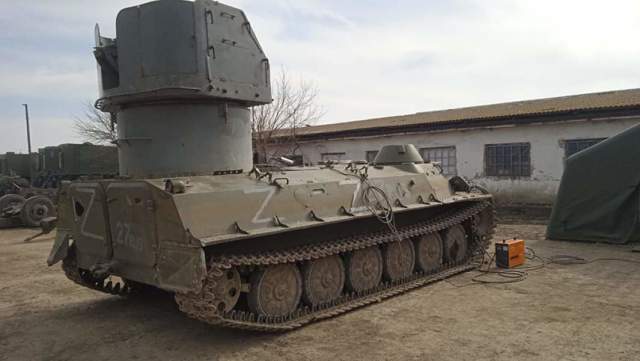
MT-LB tractor with ship-mounted 25 mm 2M-3M anti-aircraft gun
Image Source: Photo: t.me/bmpd_cast
Thus, it can be stated that the MT-LB concept has practically not become obsolete in 60 years, and such a multifunctional machine has proved to be very popular not only in the Armed Forces, but also in export markets and in the civilian sector.
The available resource in the form of a Soviet-made MT-LB is rapidly melting, and major repairs only allow you to maintain the number of serviceable machines at the minimum required level. That is, the issue on the agenda is the deployment of a new production of this machine, apparently with the possibility of installing various power plants and transmissions, the length of the chassis, the possibility of equipping it with an unarmored body, as well as in a non-armored version.
It seems that the negative experience of the Glider ROC makes it clear that this machine should not be too complex and differ greatly in its characteristics from the basic version. This is the very case when the expression "the best is the enemy of the good" is quite appropriate. But delaying the solution of this issue may lead to the fact that the army will lose a very necessary and in-demand sample of transport equipment.
Andrey Frolov
